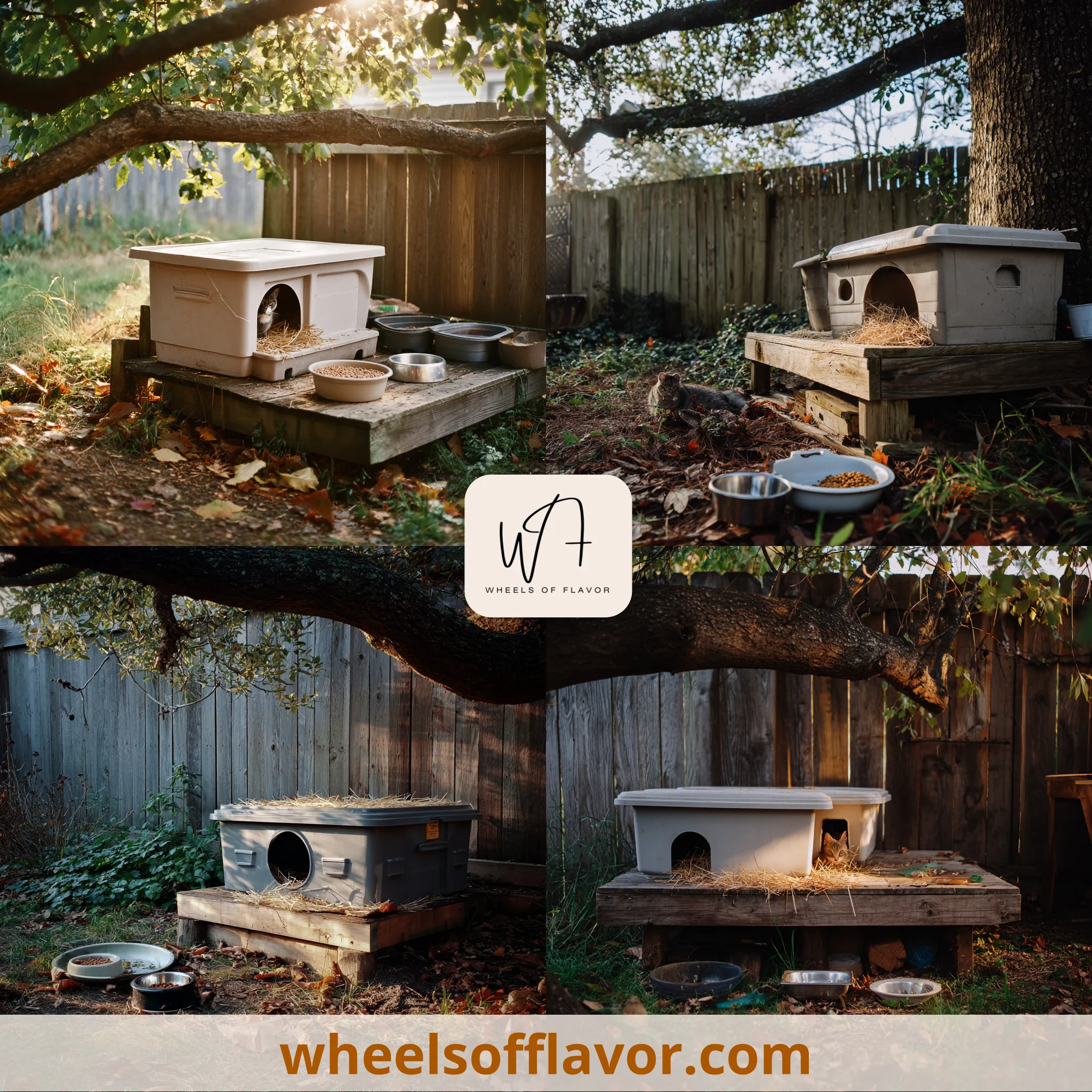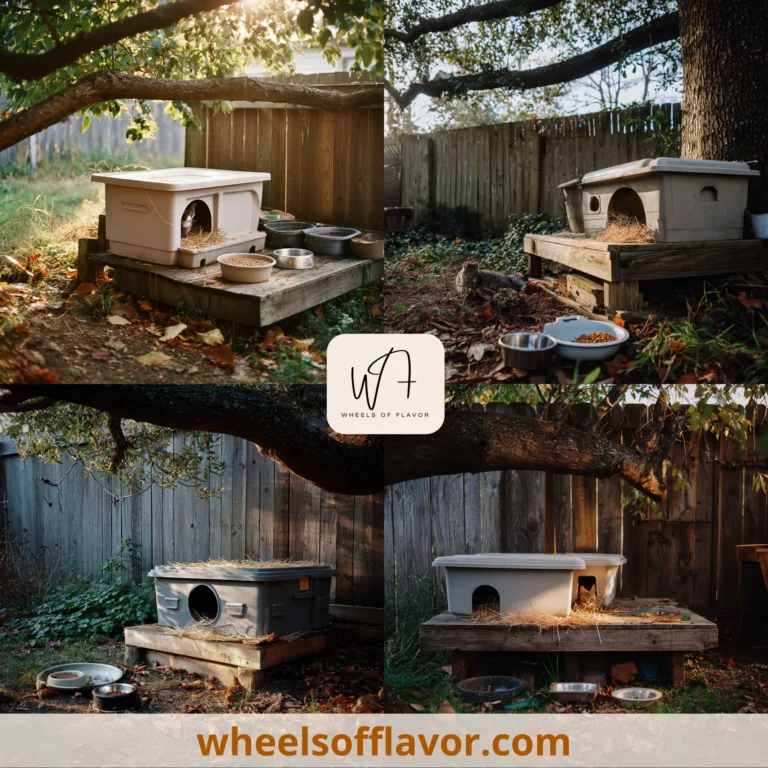
Creating a safe haven for feral cats is not just an act of kindness—it’s a vital step in protecting these vulnerable animals from harsh weather, predators, and the challenges of outdoor life. With millions of feral cats living without permanent homes, providing them with shelter can significantly improve their well-being and reduce overpopulation issues. This article explores practical and humane feral cat shelter ideas that anyone can implement, whether you’re a seasoned caretaker or new to helping these independent felines. By offering insights into effective designs and materials, we aim to empower you to make a positive impact in your community. Remember, a well-built shelter can be a lifeline for cats, especially during cold winters or hot summers. Let’s dive into how you can create a welcoming space that respects their wild nature while keeping them safe and comfortable. For more inspiration on animal-friendly projects, check out this guide from the ASPCA, a trusted resource in animal welfare.
DIY Feral Cat Shelter Ideas for Beginners
Starting with simple DIY projects is a great way to build effective feral cat shelters without breaking the bank. One popular idea is converting a plastic storage bin into an insulated haven. Cut a small entrance hole, line the interior with straw (avoid hay, as it retains moisture), and add a raised floor to keep cats dry. This basic design is affordable, weather-resistant, and easy to assemble. Another option is using Styrofoam coolers, which provide excellent insulation. Wrap them in waterproof materials like tarps to enhance durability. Place these shelters in quiet, hidden spots to make cats feel secure. Always ensure the entrance is just large enough for a cat but too small for predators. For more detailed instructions, visit reputable sites like The Humane Society, which offers step-by-step guides. These beginner-friendly feral cat shelter ideas not only protect cats but also encourage community involvement in animal care.
Advanced Feral Cat Shelter Ideas for Year-Round Comfort
For those looking to provide superior protection, advanced feral cat shelter ideas incorporate features like heating elements, multiple chambers, and elevated designs. Consider building a wooden shelter with insulated walls and a sloped roof to prevent snow accumulation. Add a heated pad designed for outdoor use, but ensure it's safe and waterproof to avoid hazards. Multi-level shelters with ramps or steps allow cats to escape ground dampness and feel more secure. Position these structures in areas with natural windbreaks, such as against a wall or under a deck. Use durable materials like cedar or treated wood to resist rot and pests. Regularly maintain the shelter by cleaning and checking for damage. These enhanced feral cat shelter ideas offer long-term solutions, reducing stress on colonies and supporting their health through all seasons. They demonstrate a commitment to compassionate care that goes beyond basics.
Budget-Friendly and Eco-Friendly Feral Cat Shelter Ideas
Helping feral cats doesn't have to be expensive or wasteful. Budget-friendly feral cat shelter ideas often repurpose household items, such as old coolers, cardboard boxes reinforced with plastic, or even large planters. Insulate with recycled materials like bubble wrap or old blankets, but avoid fabrics that hold moisture. Eco-friendly options include using sustainable wood or biodegradable elements, though prioritize durability for outdoor use. Place shelters in groups to create a colony-friendly environment, reducing the need for multiple resources. Additionally, incorporate natural elements like placing shelters near bushes for camouflage and protection. This approach not only saves money but also aligns with environmentally conscious practices. For more tips on sustainable pet care, explore resources on https://wheelsofflavor.com/, which covers various DIY projects. These ideas make it accessible for everyone to contribute to feral cat welfare without a large investment.
Conclusion
In summary, providing shelter for feral cats is a compassionate and practical way to enhance their lives and support community animal welfare. From simple DIY bins to advanced multi-chamber designs, the feral cat shelter ideas discussed offer options for every skill level and budget. By implementing these solutions, you can help reduce the hardships faced by outdoor cats, promote their health, and even assist in population control efforts through Trap-Neuter-Return programs. Looking ahead, consider advocating for local initiatives or partnering with organizations to expand these efforts. Every shelter built makes a difference, fostering a safer environment for these resilient animals. Take action today by starting a project or sharing these ideas with others—together, we can create a more humane world for feral cats.
Frequently Asked Questions
Q: What materials are best for building a feral cat shelter?
The best materials are durable, insulated, and waterproof. Plastic storage bins, Styrofoam coolers, and treated wood are excellent choices. Use straw for bedding, as it repels moisture and provides warmth. Avoid materials like hay or fabric that can retain dampness and lead to mold. Always ensure the shelter is elevated slightly off the ground to prevent flooding and add a waterproof cover for extra protection.
Q: How can I make a feral cat shelter predator-proof?
To predator-proof a shelter, keep the entrance small (about 6-8 inches in diameter) to allow cats access but block larger animals. Place the shelter in a secure location, such as against a wall or in a fenced area, and avoid areas with high predator activity. Adding a baffle or tunnel entrance can further deter predators. Regularly inspect the shelter for signs of damage and reinforce it with sturdy materials to ensure long-term safety.
Q: Are there any legal considerations when setting up feral cat shelters?
Yes, always check local laws and regulations regarding feral cat care. Some areas have ordinances about outdoor structures or animal feeding. Contact animal control or local shelters for guidance. It's also wise to get permission if placing shelters on private property not your own. Following legal guidelines helps avoid conflicts and ensures your efforts are supported by the community, promoting better outcomes for the cats.

